10 Tips to Make French Fries Like a Pro
French fries are one of those snacks that everybody loves. However, even if it might seem like one of the simplest things to make, there are many things can go wrong and there’s actually a proper technique to get the best results.
That’s why 5-Minute Crafts wants to share some tricks with you that can help you prepare delicious French fries at home, without spending too much money and in an easy way.
1. Choose the right potatoes
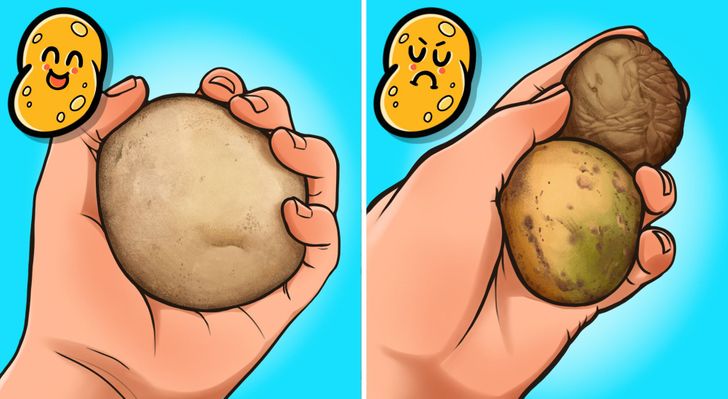
When it comes to making French fries, just like in any other dish, the ingredients you work with are very important. In this case, choosing the right potatoes is crucial for the best results:
✔️ Choose somewhat harder, firmer potatoes. These will stay crispy for a longer time and they will also cook more easily. Try going for Russets and white types of potatoes.
✖️ Potatoes that are not fully ripe or those that are overripe, instead of becoming firm and crispy when frying, they will become mushy. In addition, green potatoes can be dangerous, so be careful when choosing.
2. Cut them properly
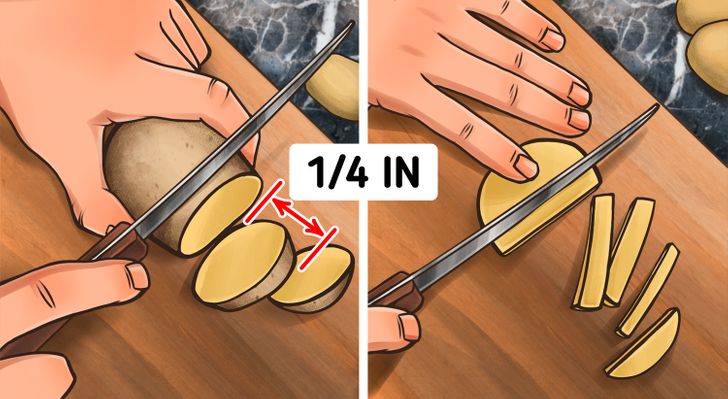
Start by peeling the potatoes and cut them widthwise into slices that should be about 1/4 in (or 6 to 7 mm) wide. Then slice them again, but this time lengthwise to obtain sticks. Make sure they are all more or less the same size. This way they’ll all cook evenly. If many sticks are smaller, some may cook before others, and they might burn in the process.
✔️ The size we’re displaying in the image is ideal. It will allow your potato to fry on the outside, while still having a soft, moist interior.
✖️ If you make thinner slices, you might end up having dry and crispy fries, instead of crunchy outside and fluffy inside. On the other hand, if you make thicker slices, the potatoes could take longer to cook or even be raw inside.
- Tip: Don’t throw away the potato peels! You can use them to make broth to accompany your meals or even as a fertilizer for your plants.
3. Rinse them before cooking

After slicing the potatoes, let them soak in a bowl of cold water. Then place the bowl under running tap water and let them soak in there for about 5 minutes (or until the water runs clear). This is a way of removing excess starch, and it will help you prevent the potatoes sticks from sticking together during cooking, which would make them turn soft on the outside instead of crispy.
4. Boil them
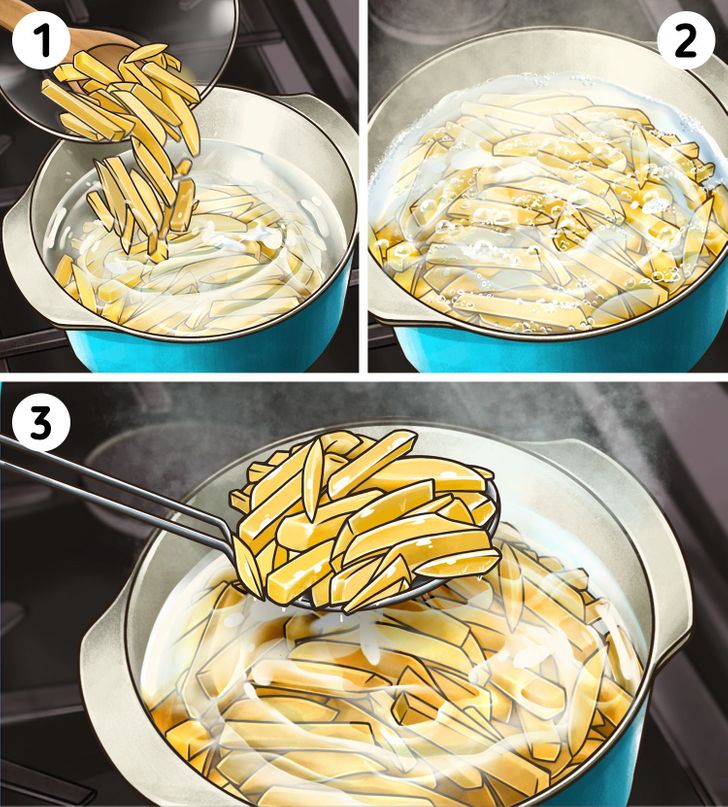
This step is essential to obtain crispy potatoes with a spongy interior. When boiled for a short period of time, the surface of the sticks will break. When frying them, these little cracks will actually make the crust firm, crispy, and delicious, since they will absorb part of the cooking oil, which will give them that crunchy texture we all love when eating fries.
- Take out the sliced potatoes from the bowl of cold water and place them in a pot that already contains boiling water.
- Cook them for 20 to 30 minutes (the time you’ll have to boil them depends on the type of potato you chose and how ripe it is). You can tell when they’re ready by looking at their skin — it should be cracked and soft, but still somewhat firm. They should not look like they are about to break into mashed potatoes.
- Use a spatula to remove them very carefully from the pot so that they do not break and place them on a rack to drain excess water and wait for them to cool.
5. Freeze them before frying them
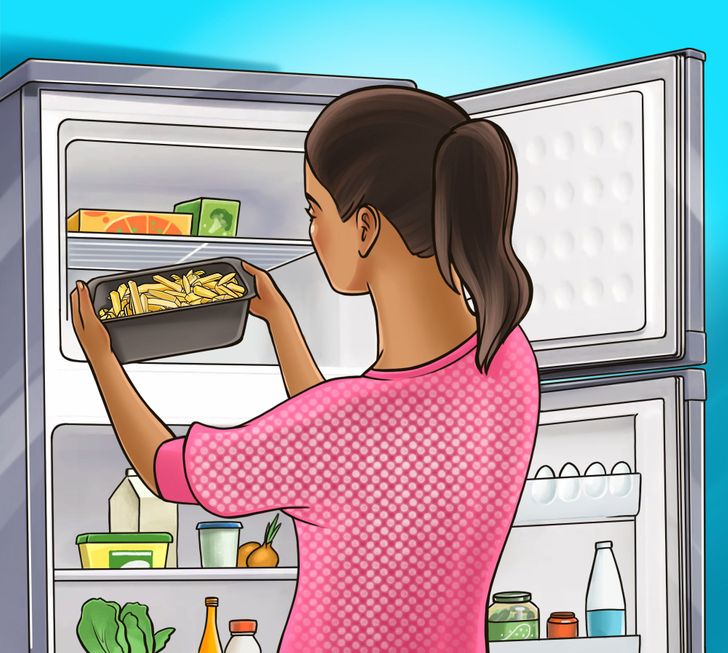
Once the potatoes are dry, take them to the freezer and let them sit there for about half an hour. By doing this, the starch that’s inside the potatoes will recrystallize. That, in turn, will make the sticks hard again. This simple trick will give them a crispy crust and a delicious firmness after frying.
6. Don’t fry them just once, but twice
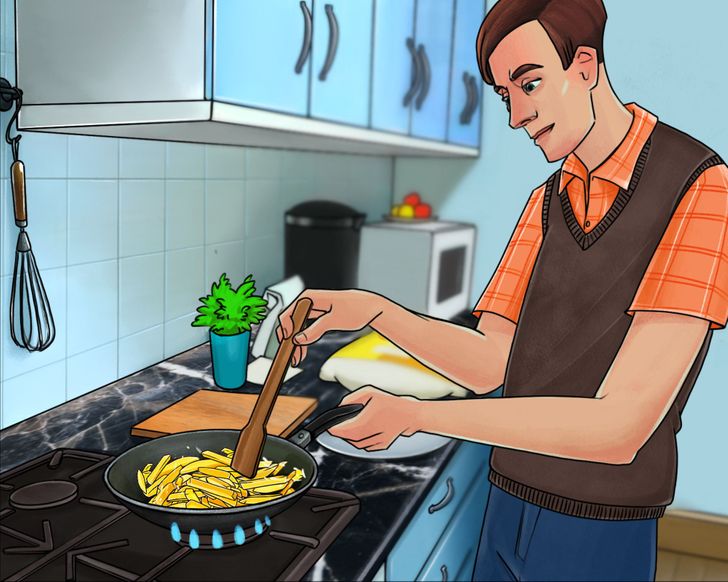
Highly acclaimed chef, Heston Blumenthal, one of the most renowned chefs in the world, recommends frying the potatoes twice so that they are very crispy on the outside, but soft and fluffy on the inside.
When frying for the first time:
- Pour oil into a frying pan or a fryer and heat until it reaches a temperature of approximately 260ºF (130°C).
- Take the potatoes out of the freezer and put them in the pan or in the fryer. Deep fry them for about 5 minutes or until they start to have a darker color, but don’t let them brown yet. It’s important that they are not cooked all the way through, but only until you see that a thin crust begins to form on the outside of the sticks.
- Carefully remove them from the oil and place them on a tray to drain any excess oil. Then place them in the freezer for another half hour. This will remove any remaining moisture from the potatoes.
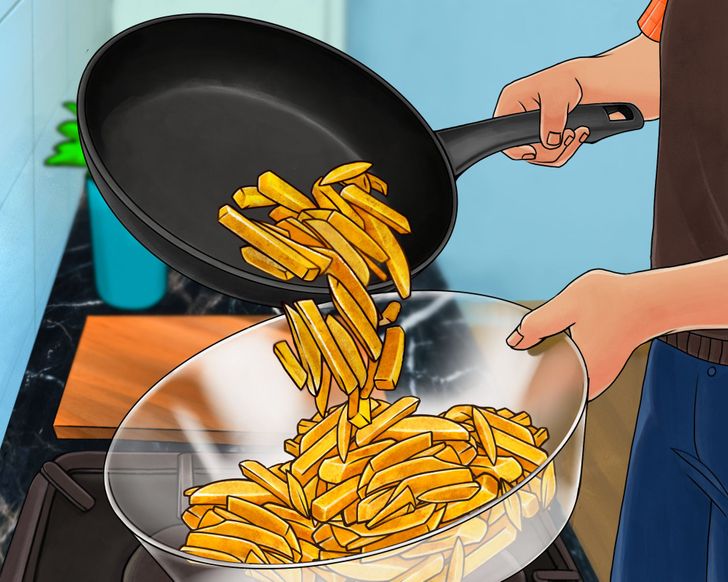
When frying for the second time:
- Heat a skillet with oil or a fryer until it reaches a temperature of approximately 350ºF (180°C). You don’t need to change the oil, you can use the same oil from the first batch.
- Take the potatoes out of the freezer and place them in the skillet or in the fryer.
- Cook them for about 7 minutes or until you see they all have a golden brown crust. Then remove and let the excess oil drain.
7. Don’t fry, deep fry instead
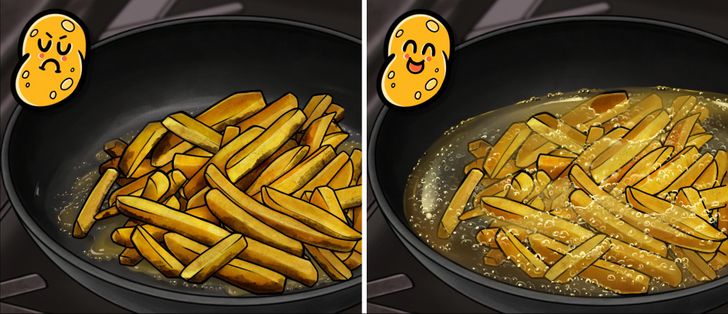
In this case, using less oil doesn’t mean that you’re cooking a healthier dish. If you skimp on this product, what could happen is that the potatoes will not cook properly, or some parts will remain raw. To avoid this, put a generous amount of oil in the pan, covering the sticks completely when you cook them.
- Tip: Don’t worry about using too much oil. You can reuse it to fry other foods or to prepare other dishes.
8. Choose the right oil for the task
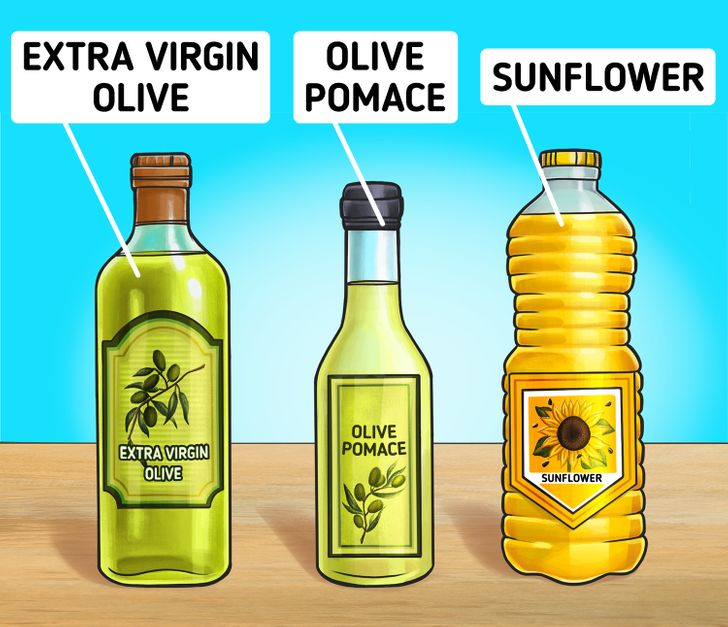
When cooking food, it is important to understand that not all oils work in the same way or should be used in the same way. We must take into account their quality, their smoke point, and their chemical composition, as this will help us to choose the most appropriate one for our dish.
Some of the best oils for preparing fried foods are:
- Extra virgin olive oil: it should have a low acidity level to prevent it from degrading quickly, but in spite of that, it has many healthy properties and beneficial nutrients for our bodies, like polyphenols, for example. However, its smoke point is lower than other oils.
- Olive pomace oil: it has a high resistance to high temperatures, which, in turn, means that it does not lose the beneficial qualities of this type of oil.
- High oleic sunflower oil: its oleic percentage prevents oxidation and rancidity.
9. Fry the potatoes in batches

✔️ Although it can be tedious to wait until all of your batches are done, it’s better to not fry all your potatoes in a single batch. By dividing them, you’ll make sure they’re all cooked properly and you’ll be able to better control the cooking times.
✖️ If you throw them all in the pan at once, not only will the oil cool down at first, which in turn will make your potatoes turn all mushy and lack a golden crust, but also they might not fry evenly. That means you might end up having some raw parts and some burnt parts.
10. Salt them when you take them out of the fryer, never before
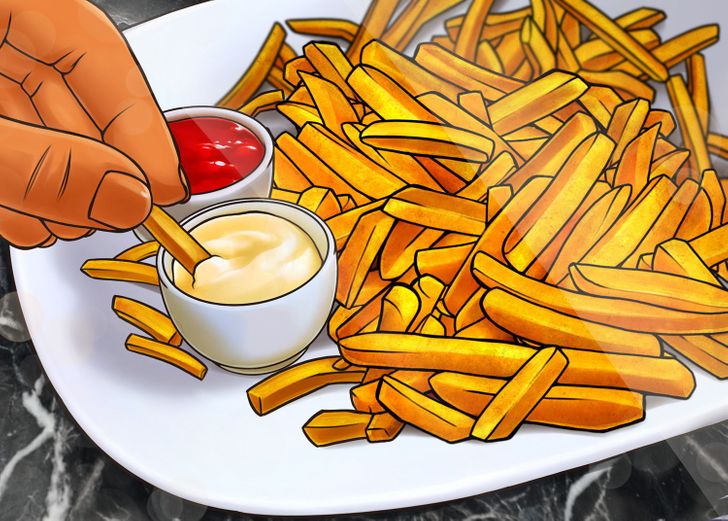
✔️ The best time to salt potatoes is when you remove them from the pan. The salt will help absorb the excess oil, which makes them crispy.
✖️ It is not recommended to salt them either before or during cooking, as this could not only alter the composition of the oil, but it could also make the potatoes mushy.